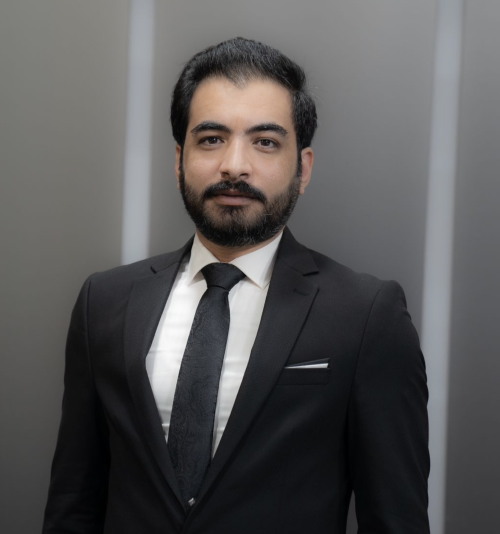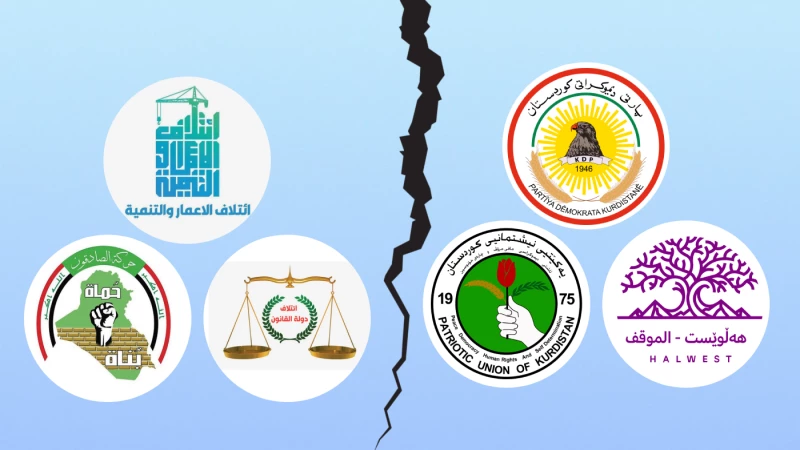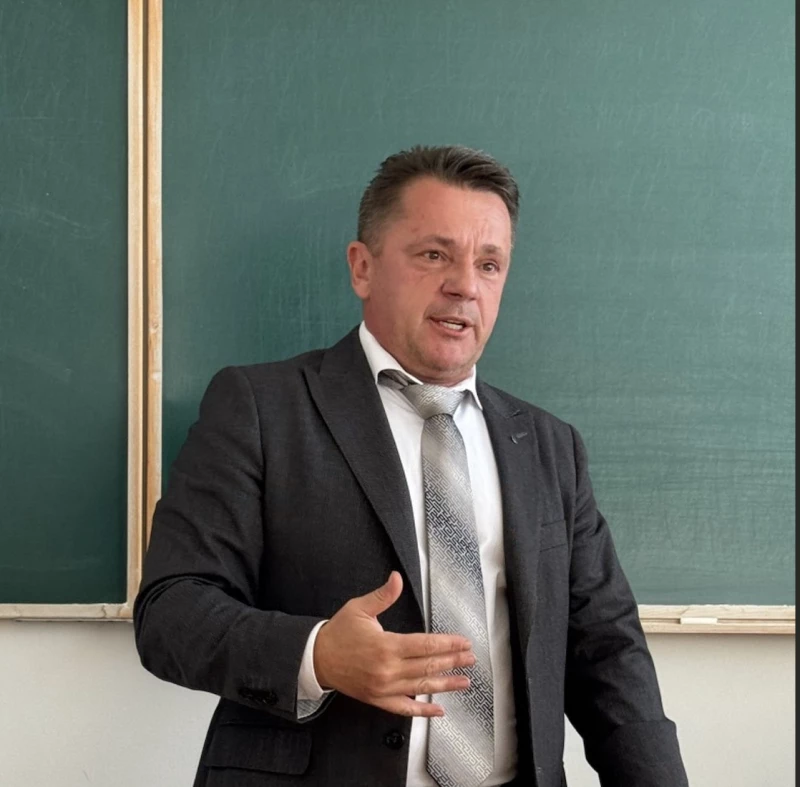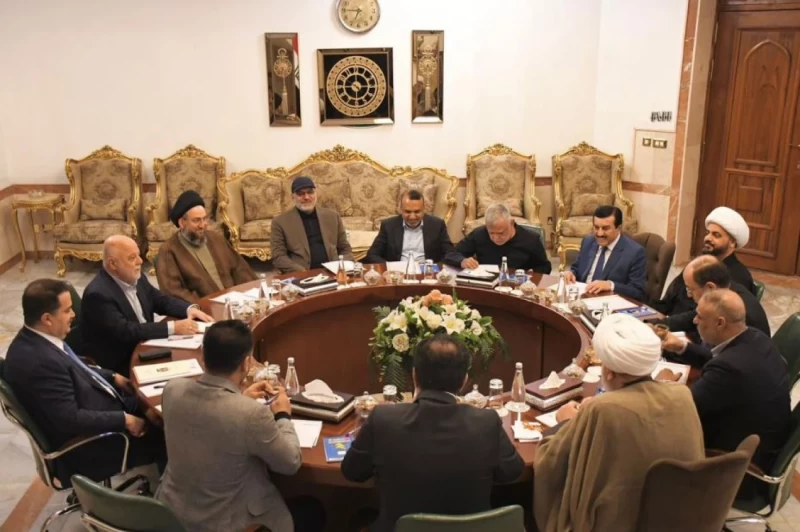The Hamas-led Operation Al-Aqsa Flood in Israel on October 7 led to the resumption of operations by Shia armed factions in Iraq against international coalition forces, focusing on the western Sunni-dominated region of Anbar and Erbil in the Kurdistan Region in the north.
These operations undermined a “truce” resulting from Iraq’s Coordination Framework coalition being given a chance to form the government despite not receiving the largest share of votes in the October 2021 parliamentary elections. The coalition includes a number of political parties closely tied to Iran-linked armed factions.
The biggest hurdle to the Coalition Framework (CF) had already been removed from the scene, however: popular cleric Muqtada al-Sadr, their rival for votes and support from the Shia community.
The Sadrist Movement got the most votes in the 2021 election. However, following many months of political deadlock and an inability to form a government, his followers had occupied part of the Green Zone in protest. Deadly clashes between them and Iran-linked armed factions were halted only when Sadr called for peace, ordered his followers to withdraw, and ostensibly withdrew from the political sphere himself.
This left the scene open to the CF, which is close to Iran and linked to the official Popular Mobilisation Units Forces (PMF).
Lead-up to divisions within ‘Islamic Resistance’
Over the past year, many voices in the public sphere have scrutinized and criticized the many meetings between CF leaders and the US ambassador, who began attending many events and holding others seemingly whenever and wherever she wanted. This, they noted, differed starkly from the months of bombings and threats to the US diplomatic mission during the previous government under Prime Minister Mustafa al-Kadhimi, in office between May 2020 and October 2022.
The CF had, in the year between the October 2021 elections and the October 2022 swearing-in of the government under Prime Minister Mohammed Shia al-Sudani, claimed that the elections had been rigged through coordination between the US, the UK and the UAE. The three countries, they claimed, had plotted to hand power to an alliance between Sadr, Parliament Speaker Mohammed al-Halbousi from the Sunni Arab community in Anbar, and the leader of the largest Kurdish party, the Kurdistan Democratic Party’s Masoud Barzani.
These incidents helped pave the way for the current situation. It now appears that armed and political factions known locally as “loyalists” – since they vow ideological loyalty to the Supreme Leader of Iran Ali Khamenei – have split into two blocs.
Attacks and counterattacks amid US support for Israel
This became clear after airstrikes by US forces near Baghdad and in the Jurf al-Sakr – now officially known as Jurf al-Nasr – area in the Babil province south of Baghdad. The airstrikes were conducted after Shia armed factions attacked military facilities hosting US-led international coalition forces at the Harir base in the Erbil province in the Kurdistan Region in northern Iraq as well as the Ain al-Asad Airbase in the western part of Iraq’s westernmost region, Anbar.
These attacks marked a de facto end to a truce in place between the coalition and Iran-linked factions following the formation of the CF-backed government under Sudani.
Equally significant is that not all factions affiliated with the group that calls itself the “Islamic Resistance in Iraq” participated in the attacks against American forces, even after Washington continued to support Israel in its military operations in Gaza.
Iraq’s Shia armed factions, including those that did not participate in armed attacks since early October after the war in Gaza started, had previously threatened to target US military facilities in Iraq and across the region if Washington did exactly what it ended up doing: supporting Israel in its war in the Gaza Strip.
Despite America’s explicit support for Israel, some factions - such as Asaib Ahl al-Haq, the Badr Organization, and other factions – assumed the stance of mere spectators to the events unfolding across the region.
Following the killing of nine members of the Iraqi armed faction Kataib Hezbollah by US airstrikes, the differences between armed Shia factions came to the fore even more clearly and embarrassed factions not taking part in the attacks against facilities hosting coalition forces.
The revelation of which factions were actually willing to act on their words marked something of a watershed moment, as the true identity of the armed Shiite factions attacking the international coalition forces has never been revealed: neither during the Kadhimi government nor during that of Sudani.
‘Empty words’ follow Jurf al-Sakr bombing
The process of revealing the identity of the factions carrying out the attacks against the American forces - which were described as “supporting Gaza” - began through announcements by Harakat Hezbollah Al-Nujaba leader Akram Al-Kaabi as well as Sayyid al-Shuhada secretary general Abu Alaa Al-Wala’i. These leaders announced that they were taking part in the attacks and in a joint operations command set up in Lebanon. Asaib Ahl al-Haq commander Qais al-Khazali at this time also stated he would provide what was asked of him if asked.
Despite an appeal by the leader of the Palestinian faction Hamas, Ismail Haniyeh, for allies in Iraq, Iran, Lebanon and Yemen to take part in the war in Gaza against Israel, most Iraqi factions declaredly part of the “Islamic Resistance in Iraq” have played no role thus far.
This process continued after the US attacks on Iraqi territory. An Iraqi member of Kataib Hezbollah was killed by a US airstrike in the Abu Ghraib area west of Baghdad and the flags of various Shia armed factions including Kataib Hezbollah and Kataib Sayyid al-Shuhada as well as the Yemeni Ansar Allah – better known as the Houthis - appeared at his funeral in the capital. The same flags appeared at the funeral of the eight Kataib Hezbollah fighters killed in the Jurf al-Sakr area in the northern part of the Babil province.
Following the US attacks, Kataib Hezbollah and its allies were expecting Iraq’s armed Shia factions to mobilize in order to avenge the fighters’ deaths. However, nothing of the sort happened.
Reactions were limited to statements of condemnation and individual calls for US forces to be removed from the country.
The greatest shock came from what many saw as a disappointingly mild statement issued by the CF. The statement did not name who was targeted by the airstrikes and did not address the issue of the removal of US forces from Iraq.
It also authorized the government to mediate between the two sides, making the factions that had taken the lead in the confrontation with US forces appear alone in a difficult situation that they had not found itself in over the previous years due to its support from – and for - the CF and the PMF.
These latter two had not abandoned Kataib Hezbollah when PM Kadhimi ordered the arrest of some of its fighters who had targeted the Green Zone early on in his term. To the contrary: the Green Zone was then stormed to force the release of the detained Kataib Hezbollah fighters.
Now, however, it seems that this must have simply been due to their opposition to Kadhimi, who was loathed by Shia factions loyal to Iran.
Kataib Hezbollah ‘embarrasses’ others
This difficult position Kataib Hezbollah and its supporters found themselves in prompted the group’s secretary general, a man known as Abu Hussein Al-Hamidawi, to break his silence and issue a statement of reproach that embarrassed those not supporting them.
His revealing of the four factions taking part in targeting US forces embarrassed some of his allied factions and especially Asaib Ahl al-Haq and Badr, considered one of the largest armed factions.
He also threatened to change some of the “rules of engagement” if American targeting and “spying” on his faction continued.
Hamidawi’s statement sparked controversy and debate within Iraqi public opinion. Talk of an escalation of disputes between PMF factions began to occupy the time of Iraqi affairs specialists, prompting Asaib Ahl al-Haq to break its silence and its military spokesman Jawad al-Talibawi to issue a press release.
The press released stated, in reference to Kataib Hezbollah’s position and its revealing of the names of the factions attacking US forces, that Asaib Ahl al-Haq had also conducted operations that had not been reported.
Not liking this response, Kataib Hezbollah’s military spokesman Jaafar al-Husseini in turn denied that operations had been conducted by any factions other than the ones mentioned by his group.
Husseini then used an expression that essentially called for others to “come down onto the field and show us what you’ve got”.
Factions with eyes on Gaza vs. those trained on upcoming polls
At a time when there is talk about participating in the war against Israel and America in the region, and armed factions are calling on each other to take part in the fight, the divide between the factions’ leaders and the two axes formed is widening.
Those in the first axis are threatening the largest military force in the world, vowing to immerse themselves in a war outside their country’s borders.
Those in the second, meanwhile, are busy preparing for the December 18 provincial council elections, with their leaders organizing rallies and other promotional events across different provinces in the country. The ambition of this second axis seems to be to monopolize power.
Khazali, for example, made statements to the media that disturbed Sunni and Kurdish political partners, given their talk of majority rule and monopolizing the top positions in the country including that of the president and the parliament speaker.
As part of an unofficial but de facto post-2003 political power-sharing system in place in Iraq, the position of prime minister has been reserved for a Shia Arab, that of parliament speaker for a Sunni Arab, and that of the president for a member of the Kurdish community.
Discussion about the CF wanting to take over the other positions came at the same time as Parliament Speaker Mohammed al-Halbousi – an ally of Sadr and Barzani – was removed from his post after a decision made by the Federal Supreme Court that some in the country see as politicized and “orchestrated” by the CF.
Despite Khazali’s seeming ambition to take Sadr’s place, and worsening divisions between the two axes of Iran-linked factions, open confrontation between them seems unlikely for a number of reasons.
The first is that the party that sets the general rules of the game – Iran, through its Islamic Revolutionary Guards Corps (IRGC) - will not allow a clash between two factions considered to be part of its regionwide “resistance movement”, on which it relies for any escalation and which acts as the first line of defense for its plans and borders.
The second is that all virtually all armed Shia factions have brigades within the official PMF as part of their bid to obtain legitimacy as well as salaries for their members and weapons, enabling those in politics and power to serve and defend the interests of others.
For factions not active in politics, meanwhile, reconciliation seems more important than any disagreement.
And then there is the fear of political opponents who, if they were to take the reins of power, may overpower both axes, as these factions are well aware.
Outlook for the future?
Amid this complex scene and the dominance of the Iran-linked factions over the general atmosphere in Iraq, weak governments are established, elections described as democratic are held, international and international missions operate, and over 40 million Iraqis live turbulent lives.
There is now talk about a future conflict between Iran-linked armed factions and international coalition forces, if the pace of war were to escalate in Gaza again and the Houthis continue to hijack ships and tankers from international waters and Israel carries out its threats against Hezbollah in Lebanon.
What will happen to Iraq if Islamic Resistance factions resume using ballistic missiles to strike American bases?
It also appears that the Sudani government is in a difficult position due to pledges made to the US to find and punish the perpetrators of attacks against its forces and diplomatic mission, which received direct threats in Hamidawi’s last statement.



 Facebook
Facebook
 LinkedIn
LinkedIn
 Telegram
Telegram
 X
X


